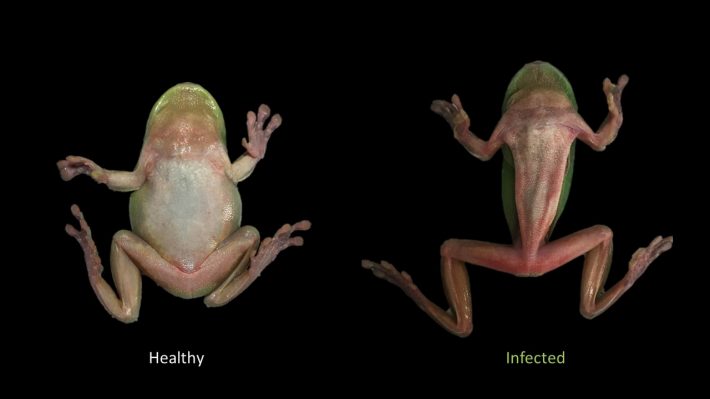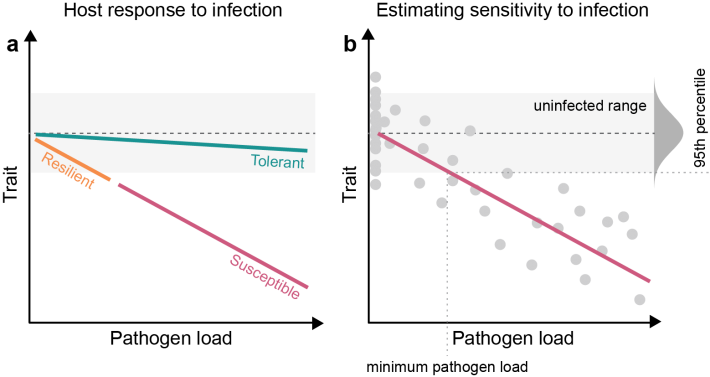Frog pathogen has different impacts on species according to new study
Western Sydney University Press Release
A new study by a Western Sydney University (WSU) researcher explores a lethal fungal pathogen responsible for widespread biological disruptions for frogs worldwide, assessing how responses differ between species.

Published in Functional Ecology, the study examines what is widely considered the most devastating single disease on biodiversity: the chytrid fungal pathogen. The disease contributed to the decline of at least 501 amphibian/frog species, however, it is not known whether infected frogs experience the same symptoms.
Dr Nicholas Wu, lead author of the study, explained “Using a meta-analytical data approach, (a type of research that combines findings of several studies to calculate an overall result,) the study revealed there are several commonalities in symptoms among frog species that provide a clearer idea of the mechanism of the disease.”
“Emerging infectious diseases contribute to ongoing loss of biodiversity worldwide”
Common symptoms can be used in conservation practices to predict how frogs who have not been exposed may respond to chytrid infection. For example, by swabbing a sick frog in the wild and knowing the pathogen load, they can predict what the frog could be experiencing, without experimentally testing them.
“The findings suggest that if the pathogen load is low, the host may experience skin disruptions and changes in immune response, but a high pathogen load can cause changes in reproduction and body condition,” Dr Wu continues.

Meta-analytic approaches can be a useful tool to better understand disease dynamics in an ecological context as “Emerging infectious diseases have contributed to the ongoing loss of biodiversity worldwide,” Dr Wu explains.
How species respond to infectious diseases depends on several environmental factors, as well as differences in host and pathogen traits. For example, body condition, reproduction and metabolic rate can all affect a species sensitivity to the pathogen.
“Understanding similarities in trait sensitivity can help understand disease impact and help wildlife management efforts,” added Dr Wu.
Read the full article here, free for a limited time:
(2022). Pathogen load predicts host functional disruption: A meta-analysis of an amphibian fungal panzootic. Functional Ecology, 00, 1– 15. https://doi.org/10.1111/1365-2435.14245
Like what we stand for?
Support our mission and help develop the next generation of ecologists by donating to the British Ecological Society.